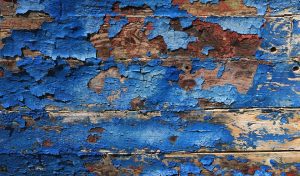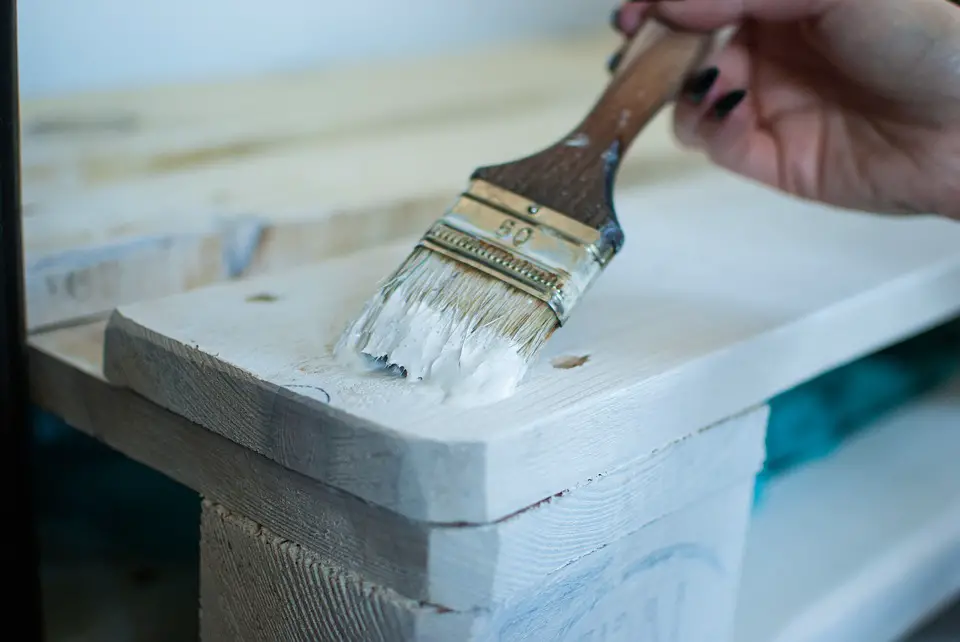Are you planning to paint your furniture but are unsure whether you can pull that off? Well, the first question you should ask is, “do I need to apply primer before painting on wood?” Well, I have tried to explain it all, so keep reading his blog till the end and hopefully, you wood benefit from it! (pun intended!)
Primer is applied on many surfaces to increase the durability of painting and to make the paint remain undamaged for a long period of time. Like canvases, if you apply primer on wood surfaces, it will allow the paint to remain as it is for years.
Just so you know: Primer is the first coat we apply on any surface to make it paint-friendly and to fill the gaps that can otherwise damage the paint or we use primer to enhance the sharpness of colors of paint. We all know that like canvases, wood is also a good absorbent.
We prepare the canvases before the actual painting so that it will not absorb the paint and the painting will have distinct and sharp colors that make it pleasing and beautiful to our eyes. The same procedure is applied to a wooden surface. Otherwise, it will absorb the paint and the colors will become dull and can get easily damaged.
Do I Need to Apply Primer Before Painting on Wood?
Primer is the first coat on any surface that covers stains, grains, and evens out the blemishes. Primer is also needed to give the paint a smooth finish. It enhances the sharpness of the painting and also helps the paint to stick on the surface, which in turn increases the durability of the paint and it remains undamaged for years.
Wood primer is an undercoat that is usually applied before you start with your painting. It is very important to prime the surface that you are planning to apply the paint on and it is suggested to apply a layer of primer for everyone who is painting; be it a beginner or pro.
It does not matter if the project you are working on has a rough, old, dry, or dented surface, most of the time, applying a coat of primer is enough for a good finish. Paint primers are usually semi vicious and sticky in nature which proves them to be a good component for the perfect paint finish as it would eventually increase the durability of your paint.
Benefits of paint primer

There is no harm in using paint primer for wood before painting it. The primer works in such a way that it fills out the imperfections and does not let the paint soak into it. Primer forms a protective and long-lasting layer on the surface it is applied to by minimizing the grains and leaving behind a smooth and even surface to paint on. Following are some points on the benefits of paint primer in detail:
A Smooth Surface For a Perfect Finish
It really depends on the surface texture you are working on to give you the final outlook. Some of the surfaces require two coats of primer to balance out the blemishes. On the other hand, when you’re working without a primer and the surface is too rough or unequal, you require a lot of paint because the blemishes or rough surface would eventually soak up a lot of the paint. Plus you won’t have that great of a final product either.
To achieve the perfect finish, you’ll have to apply a few coats of the primer so the surface evens out as the primer builds up a thick protective layer. The exact opposite of a rough surface can also be an issue; when the surface you are intending to paint on is too glossy or excessively gleaming. It would be difficult for you to paint or apply a coat of primer on it because both the paint and the primer would not be able to lock down into the surface and it would result into a disaster. So, you should make sure that you are working on a paint and primer-friendly surface.
Covering Stains, Grains & Evening Out the Blemishes

Paint primer is known to be significant for concealing blemishes and stains. When the blemishes and stains are covered properly with a coat or two of the primer, the paint is applied and is allowed to do its actual job of giving excellent hues instead of just covering the stains, grains, and blemishes when the paint primer is not applied.
Saving Your Dollars
A very significant point here is that a paint primer is pretty inexpensive as compared to paint, so it actually makes a lot of sense to apply a coat of paint primer before directly applying the paint. It will save you a lot of paint and will help you achieve a perfect and long-lasting finish without wasting any bucks on extra buckets of paint that you don’t really need.
Color Neutral Use
Another benefit of the paint primer is that it is white in color mostly, but you can avail it in other neutral colors too. If the final color you are planning to paint on is lighter than the original color of the surface/wood, then you can choose the primer of that color and cover the surface with it to start your painting. The white color of the primer is mainly to deposit the exact color you are using.
What type of primer is used to prime wood before painting?
For deciding on a primer, try differentiating between; (a) the surface you want to paint on, and (b) the fact that whether the final product will be used for an indoor object or an outdoor one. In our case (regarding wood), you can categorize the primers as the interior and exterior primers. For wood, the exterior primers are proved to be better as compared to the interior primers because they are more long-lasting and rigid in nature which results in good protection from buildup, cracking, and erosion. Not every primer works well on wood. There are different primers for different kinds of wood.
Already painted wood
If the wood you are planning to paint on is already painted and is in good condition, then you might not need to apply a coat of primer. On the contrary, if the paint is chipped and chalking, then try scrapping the chipped paint off first and then apply a fine coat of oil-based primer.
New wood
Referring to new wood means that you are planning to paint on a wood that has no stains or has minimal grains. For such type, you do not have to use stain-blocking primer, as per my experience latex primer would do a great job!
Weathered wood
To paint on weathered wood, you will need latex or oil-based primer to prime the surface for a smooth application of the paint. Keep in mind that just because you are using a primer does not mean that you should skip the preparation. So, take sandpaper and scrap off as much paint as you can until the new fibers are visible and then finally apply a thin and fine coat of the latex or oil-based primer.
You can get the primers on Amazon
- Recommended Oil-based primer
- Recommended Water-based primer
- Recommended Exterior Purpose
- Recommended Interior Purpose
Is ˜paint and primer in one” effective for painting on wood?
The thought might have crossed your mind about why you should not go for the paints that already have a primer. According to my knowledge, ˜paint and primer in one˜ is not as effective as using the primer and the paint separately for wood. But the ˜paint and primer in one˜ proves to work best on previously painted surfaces or dry-walls. Such paints have a thick consistency which means that they might not be able to perform as well as an individual primer paint duo, on other surfaces.
How to prime a wood surface?
Priming your base before painting adds beauty in your work which results in a fine finish. Priming the wood helps you deposit the paint nicely. To start off priming, use sandpaper to scrape off the previous paint or to even out the bumps on your surface.
If the surface of your wood does not have bumps or any other imperfections apart from grains, then you might skip the scrapping-off part. After this, with the help of a roll, spray or a brush, start applying a thin and fine coat of primer to your base. You can go for another coat too if the grains are still prominent but make sure that you let the first coat dry properly first.
You can coat as many layers as you want of primer to make sure that the grains are no longer visible and it is safe to apply paint.
FINAL VERDICT
Using a primer helps block tannin, grease, water, oil, and other products that may bleed through your topcoat. It also enhances the finish and ensures the durability of the topcoat (paint). Primers are necessary to use before applying paint as they seal the original product and work as a barrier to protect it from the topcoat or products that can bleed through it.
The primed wood would give a subtle and perfect finish to your project as compared to the one where you did not use the primer as you will probably require more covers of paint for sufficient coverage. Also, primers are pretty inexpensive as compared to paints. So, the answer to the question ˜Do I need to apply primer before painting on wood?˜ is very simple. Yes, it is always a good idea to prime your base first before applying paint either for canvases or wood.
In the end, priming up your surface before painting should never be a decision that you may regret later.
Hope you found the article helpful.
Happy Painting! 🙂
Beatrix Ainsley (Bea to her friends) is an abstract artist who was heavily inspired in her twenties by the abstract expressionist movement of the 1940s. Since then Bea has acquired three degrees in Science, Education and most importantly Fine Art. Her art works showcase exploring emotion and introspection of self. To achieve this – the use of bold, sweeping, intricate layers of color, and spontaneity of form is enhanced by reflecting on decades of life experiences. Bea has amassed a vast knowledge of art in all its forms, and hopes to pass it on with her contributions here.

